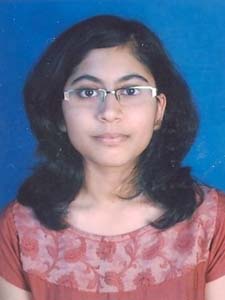Wrong.
I stand in front of my mirror and look into the face staring keenly back. I see sorrow wreaking havoc inside like a storm and joy prancing about, as bright as the sunlight. Yes, it’s funny how Mother Earth incorporates her weather changes with our life experiences. Longing for the sight of a young, full of life teenager, I close my aged eyes. It was almost as if a video tape started playing in the screen of my head.
“Don’t you dare take the car out, young man!” were the words announced by a man, whose silhouette was seen against the doorway. His booming voice resounding on my eardrums, I back answer, “Dad! It’s just a movie! I’ll be back safe and sound” and I drove off into the night, headlights snaking through the dark lane..
My frustrated father slammed the door shut and swore that he would sell off his car the very next day. But he smiled after that of course not meaning what he just said. “Let the boy have his time!” I couldn’t resist the temptation of joining in with the most popular gang of people from college for a movie that night. But my father didn’t exactly have the blessings of the God of health, which was balanced precariously on the verge of life and death. At that point of time in my life, this was a crossroad. “I did deliberate!” cropped up the voice of the defensive in the car that night and it was done. A choice was taken, a lane in the crossroads chosen- rashly, inconsiderately. So what if it was the wrong choice? It would be a mere two hours. It would be alright.
Music blaring out of my speakers, competing with the howls of the wolves from the hills above, I slowed down into the driveway of the theatre. Squinting against the glare of light, I look for the clique which I so desperately wanted to be a part of. A roar of laughter greeted my ears as I walked nervously towards them.
“Is this what you generally wear?” asked a somebody, the question striking me square on the face.
“Honestly, is that what you call a car?!” was another question shot at me.
“Hey, nice haircut, dude!” came a sarcastic voice.
On went the stream of insults. I had had enough. I turned back, retracing my footsteps to my car (Yes, I do call it a car!). I backed out of the drive and head back home. I felt ashamed at having taken such a terrible decision of hanging out with such annoying people and leaving my poor father to look out for himself alone at home!
A clap of thunder shook me out of my reverie. An ominous sense of foreboding steals over and settles over me. As the needle on the speedometer rose, the feeling grew worse. A crunchy noise on the gravel below made me realize that I had gotten out of my car. I banged open the door in my hurry. I look around wildly, not registering the sight of my father anywhere.
I heard a shallow thump from above, upstairs. Racing against time to be up there, I emerge into my father’s room to see him crumpled on the floor with his fists clenched tightly. Even in his pain, he beckoned for me to come closer. Panic tore at my insides and my mind was clouded with fear…
One step… Two steps…
Kneeling at his head by the hearth, looking into eyes filled with wisdom... With love… Lines on his forehead etched with experience…
My cries of sorrow renting the air…
My heart beats slowing down and the chills creeping into the room…
And down went my father in my arms- my sole beacon of hope, life and light in my life, my world, where he was, is and will always be- into an abyss from where he would never return…
My eyes snapped open, unwilling to remember more.
I see myself clutching the sides of the mirror- white knuckled, pale faced and shivering. I contemplate. Do I still say, “Crossroads. Really, now?” Do I still feel that taking a wrong choice could be paid off easily?
Tearing my eyes away from the mirror, I walk towards my car. Stepping out into the fresh early morning air, I see a group of teens racing on motor bikes. I look at them. I look at my kids.
I’m at another crossroad.
But I’m much the wiser.

(The writer is a first year MBBS student at Father Muller Medical College, Mangalore)






Comments
Add new comment